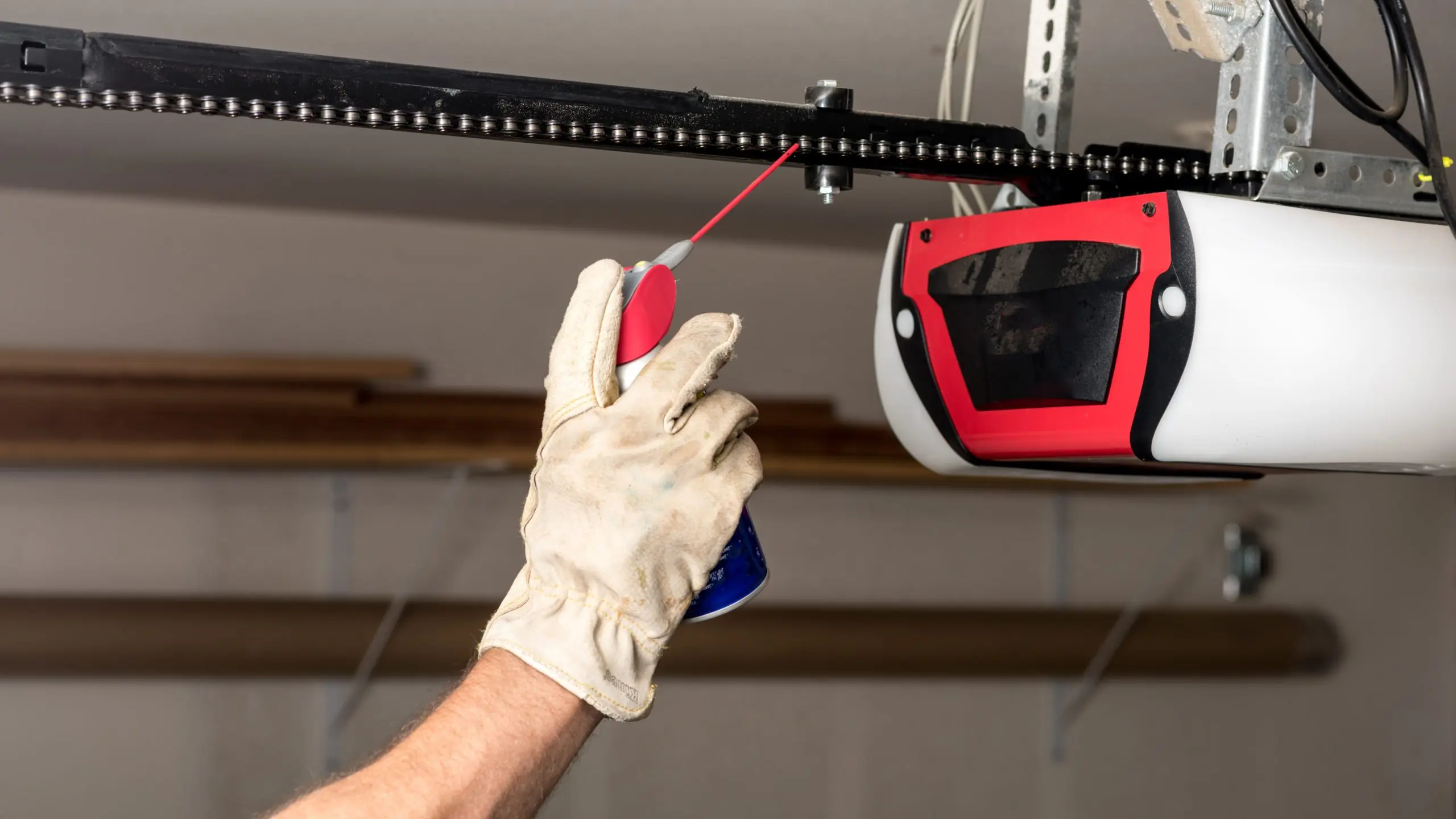A broken garage door opener can mess up your daily routine and put your home’s security at risk. Before you reach out to a costly garage door service, try some easy troubleshooting steps. You might be able to find and fix the problem on your own.
This article shares seven simple fixes for a garage door opener that isn’t working. These tips can help you get your door back on track quickly and easily.
Key Takeaways
- Discover common reasons why your garage door opener might not be working.
- Learn about power source issues, remote control problems, and sensor misalignment.
- Follow our step-by-step troubleshooting guide to identify and solve the issue.
- Find out when it’s best to call a professional garage door technician for assistance.
- Get your garage door opener not working again with these quick and easy fixes.
Understanding the Basics of Garage Door Opener Not Working Issues
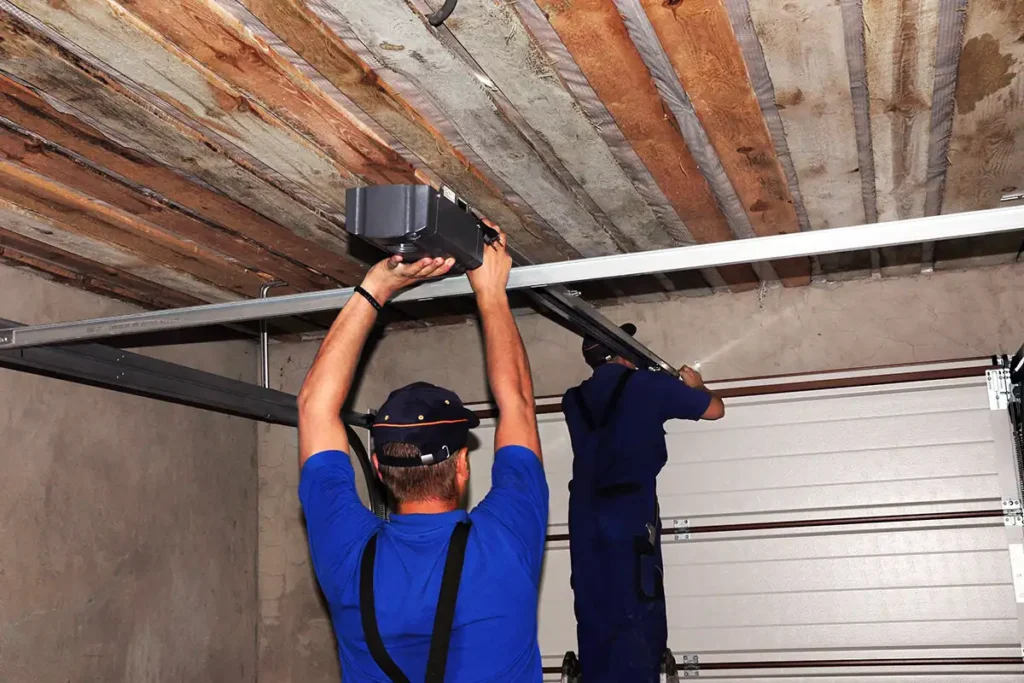
A garage door opener has several important parts that work together to make it function smoothly. The opener motor gives the power needed to lift and lower the heavy garage door. This motor is usually installed on the ceiling of your garage and connects to a power source.
The opener system also has tracks and rollers that help control the movement of the garage door as it opens and closes. Knowing how these parts work can help you find problem areas when you are troubleshooting a garage door opener issue.
1. How Garage Door Openers Function
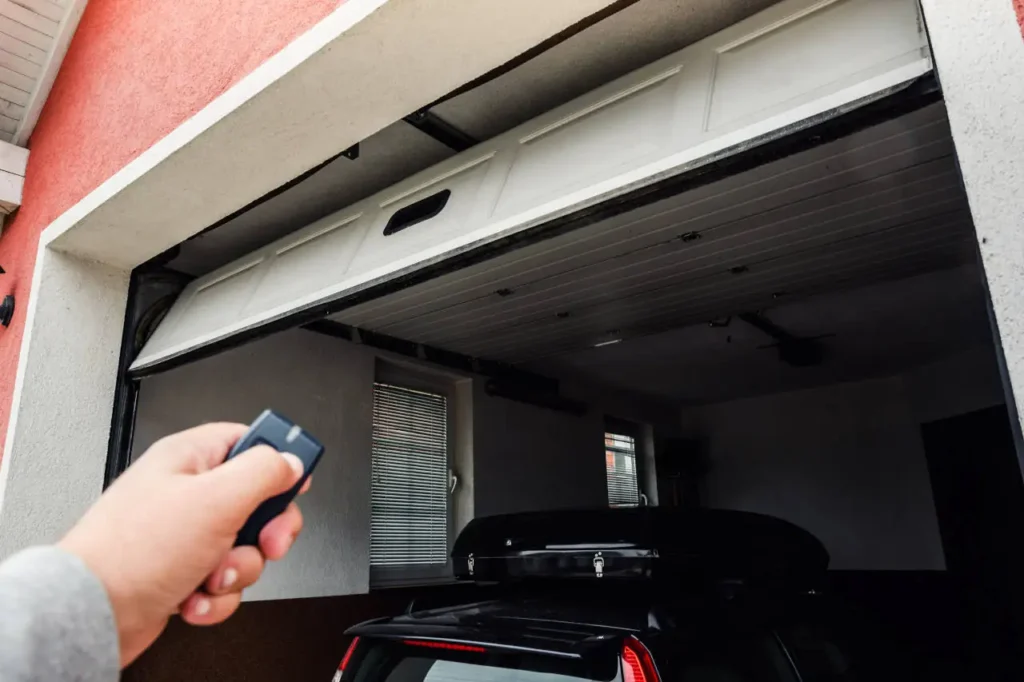
The motor of the garage door opener connects to a set of torsion springs, which work like counterweights. These springs hold up the garage door, making it easier for the motor to lift and lower it. When you use your garage door opener, whether with a remote or a wall switch, the motor starts. It pulls on the torsion springs.
These springs then turn, using stored energy to lift the garage door on the tracks. When the door shuts, the process reverses. The springs wind up, saving energy for the next time you open the door.
This setup of a garage door motor and torsion springs helps your garage door opener lift and lower the heavy door easily, over and over again.
2. Common Signs of a Malfunctioning Garage Door Opener
When a garage door opener starts to have problems, you may notice some signs. Unusual noises are often one of the most common signs. If you hear grinding, screeching, or scraping sounds when the door moves, there might be an issue with the rollers, tracks, or the opener motor itself.
Another sign is if the door does not open or close all the way. If you see the door reversing or stopping in the middle, there could be several reasons. These might include misaligned sensors, broken limit switches, or things blocking the door’s path.
Also, if you see any signs of damage like frayed cables, broken springs, or damage to the opener unit, you should address them right away.
Identifying and Troubleshooting Power Source Issues
In many cases, a garage door opener stops working due to a simple power supply issue. Before you start looking for more complicated problems, you should check for any electrical issues first. A power surge, a tripped circuit breaker, or a loose electrical connection can interrupt the power to your garage door opener. This may cause it to fail.
When you have a problem with your garage door opener, the first thing to do is check its power source. Taking a moment to verify these basics can save you time and effort. It can also help you avoid costly garage door repair later.
3. Checking the Power Supply
Start by looking at the outlet where your garage door opener is plugged in. Make sure it is plugged in properly. Check for any signs of damage on the outlet or the opener’s power cord. If everything looks good, make sure the circuit breaker for the garage door opener has not tripped.
Find your electrical panel and look for the breaker that controls your garage. If the breaker is tripped, it will be between the “on” and “off” positions. To reset it, first move the switch to “off” and then back to “on.”
Once you’ve reset the breaker, go back to your garage and test the garage door opener. If it still does not work, there may be an electrical problem that needs a qualified electrician to fix.
4. Resetting Your Garage Door Opener

Sometimes, power supply problems or electronic glitches can make your garage door opener not working unresponsive. You can often fix these glitches by resetting the opener. Most garage door openers have a “learn” button. This button lets you reset and reprogram remote controls and other accessories.
To find the “learn” button and get the specific instructions for your opener, check your garage door opener’s manual. Usually, you will press and hold the “learn” button for a short time until you see an indicator light blink. This light tells you that the opener is in reset mode.
After you reset it, you will probably need to reprogram your remote controls by following the instructions in the manual. If your garage door opener still does not work right after resetting, it’s best to contact a qualified garage door service technician to help diagnose and repair the issue.
Addressing Remote Control and Wall Switch Failures
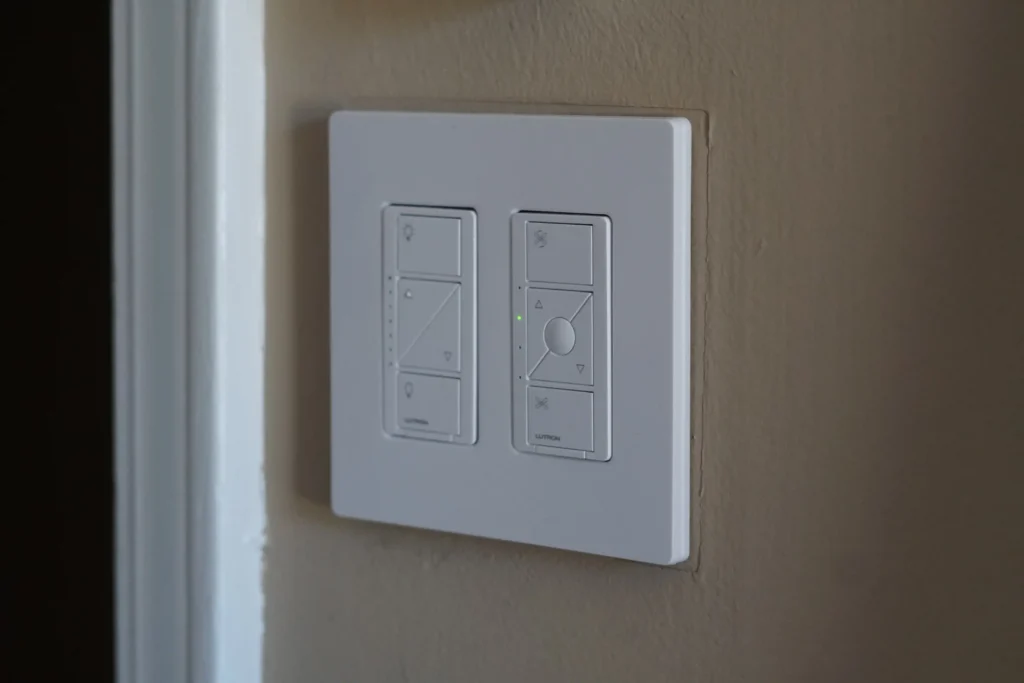
If your garage door opener has power but doesn’t work with the remote control or the wall button, there may be an issue with those parts. A broken remote or faulty wall switch can cause problems with the whole system.
The good news is that these problems are usually easy to fix. You often do not need to call a garage door technician. By checking each component carefully, you can find and fix the problem quickly.
5. Replacing Remote Batteries
One simple reason your garage door opener not working is that the batteries are drained. Over time, these batteries lose their charge, which means the remote will stop working altogether. If the garage door opener does not respond to the remote button, your first step in troubleshooting should be to change the batteries.
To do this, find the battery compartment on the back of your garage door opener remote. Depending on the model, you might just slide open a cover, or you may need to use a small screwdriver to open it.
Once you have the battery compartment open, take out the old batteries and put in new ones. Make sure the new batteries are in the correct alignment, with positive (+) and negative (-) ends matching up. After you replace the batteries, test the remote to check if it now operates the garage door opener.
6. Inspecting Wall Switch Wiring
If changing the remote batteries does not fix the issue, and your opener motor is working but the door isn’t moving, the problem may be with the wall switch. Over time, the wires between the wall switch and the garage door opener can get loose, damaged, or corroded. This can stop the signal from getting through.
Before you check the wires, make sure to prioritize safety. Cut off the power supply to the garage door opener at the circuit breaker to avoid electrical shocks. Once the power is off, look closely at the wires connected to the wall switch.
Check for loose connections, worn wires, or any corrosion. If you find problems with the wiring, go to a qualified electrician or garage door technician to fix or replace the damaged parts.
Adjusting Misaligned Photo Eye Sensors
Modern garage doors come with safety sensors, called photo-eye sensors. These sensors stop the door from closing if they see something in the way. You can usually find them near the ground on both sides of the garage door opening.
Misaligned photo eye sensors often lead to garage door issues. They can stop the door from closing all the way or even make it go back up. Dirt, debris, or small bumps can knock these sensors out of alignment. Fortunately, fixing them is usually a quick and simple job.
7. Cleaning and Aligning Sensors
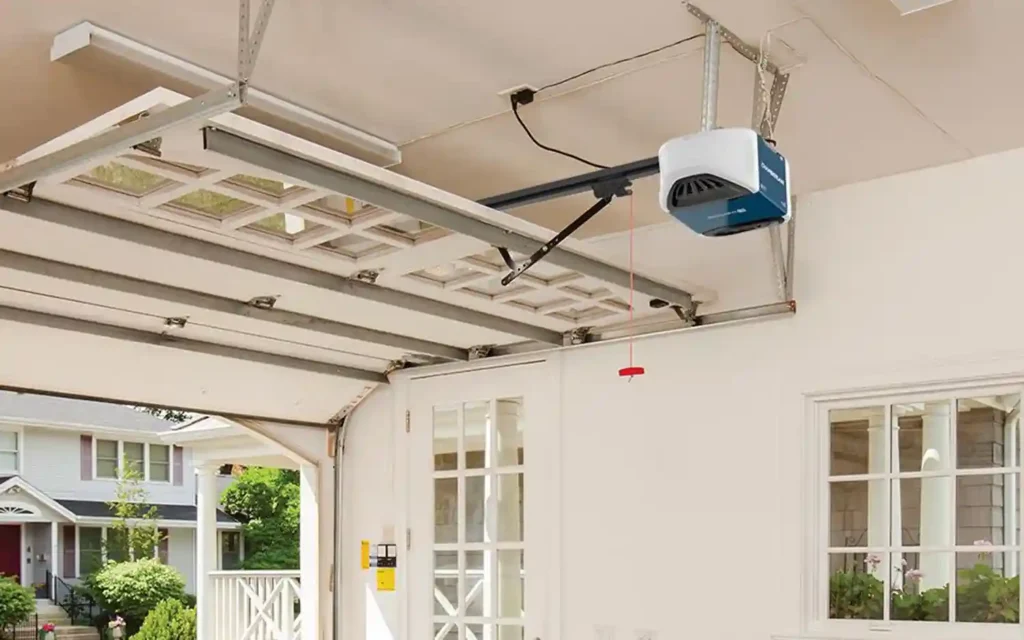
The first step in fixing photo eye sensor problems is to make sure they are clean and not blocked. You can use a soft, dry cloth to wipe off any dust, cobwebs, or debris on the sensors’ lenses.
After that, check the sensor alignment by looking closely. Each sensor sends a light beam toward the other one. You should see a small, steady light on each sensor. If the lights are weak or flickering, this may mean they are not aligned properly.
If you need to correct the sensor alignment, loosen the wingnut that holds the sensor bracket where you need to make changes. Gently move the sensor until the light beam is aimed directly at the other sensor. This will make sure both lights are strong and steady. Once they are aligned, retighten the wingnut to keep the sensor in place.
Also Read: 5 Easy Steps for Garage Door Roller Replacement Parts
8. Testing Sensor Functionality
After cleaning and lining up the sensors, you need to check if they work. First, close your garage door. Then, put something, like a cardboard box, in the way of the door. Make sure it is tall enough to block the sensor beam. Now, use your garage door opener to close the door. The door should either stop or go back if it sees the object.
If the door does not react to the obstruction, check the sensor alignment again and fix it if needed. Do this test again to make sure the sensors are working right.
If you have done these troubleshooting steps and your garage door still does not work, you may need to get help from a garage door technician. They can find and fix any problems to make sure your garage door opener works safely and properly.
Conclusion
If your garage door opener is giving you problems, don’t worry! Learning about how it works and fixing issues can save you time and money. Start by checking the power source and adjusting the sensors. These simple fixes can help if your garage door opener not working.
Don’t let a broken opener hold you back – face the issues directly with these easy solutions. Also, regular care can stop problems from happening again. Stay ahead and keep your garage door running well.
Frequently Asked Questions
1. What Should I Do If My Garage Door Opener Remote Is Not Working?
If your garage door opener remote is not working, try these easy troubleshooting steps: First, change the remote control batteries. Make sure they are fresh and installed properly. Next, reprogram the remote control. You can do this by following the instructions in your garage door opener manual.
2. What would cause a garage door opener to stop working?
Common reasons for this issue are a broken opener motor, problems with the power supply, things blocking the door’s path, issues with the safety sensors or the door being in manual lock mode.
3. How do I reset a garage door opener?
Most garage door openers have a “learn” button. First, find this button. It is usually on the back or side of the motor unit. Press and hold it for a few seconds to reset the opener. After that, you may need to reprogram your opener remote.
4. Why is my garage door not responding to the emote?
There are a few reasons why this might happen. It could be because of interference from other devices. It might also be due to dead batteries in the remote. Another possibility is a problem with the opener’s antenna or a remote control that is not working.
5. What is the common problem of a garage door?
A common problem is when a garage door gets out of line with its tracks. This often happens because of the weight of the door. Other issues can include broken torsion springs, worn rollers, and an unbalanced door. If you notice any signs of damage, it’s important to pay attention to them.
6. Why aren’t my garage door remotes working?
The most common reasons are old batteries, accidentally pressing the “lock” button on the wall control panel, holding the remote button too long, or interference with the signal.
7. Why does a garage remote not work?
A garage door remote may stop working for a few reasons. The remote batteries might be dead. The transmitter could be malfunctioning. There might be issues with the garage door opener’s receiver. The keypad may be inactive, or there could be corrosion on the battery terminals.
8. What are the common causes of a garage door not opening?
Common reasons are a blockage in the door’s path, broken garage door springs, worn rollers, a door that is not aligned, or problems with the garage door opener.

